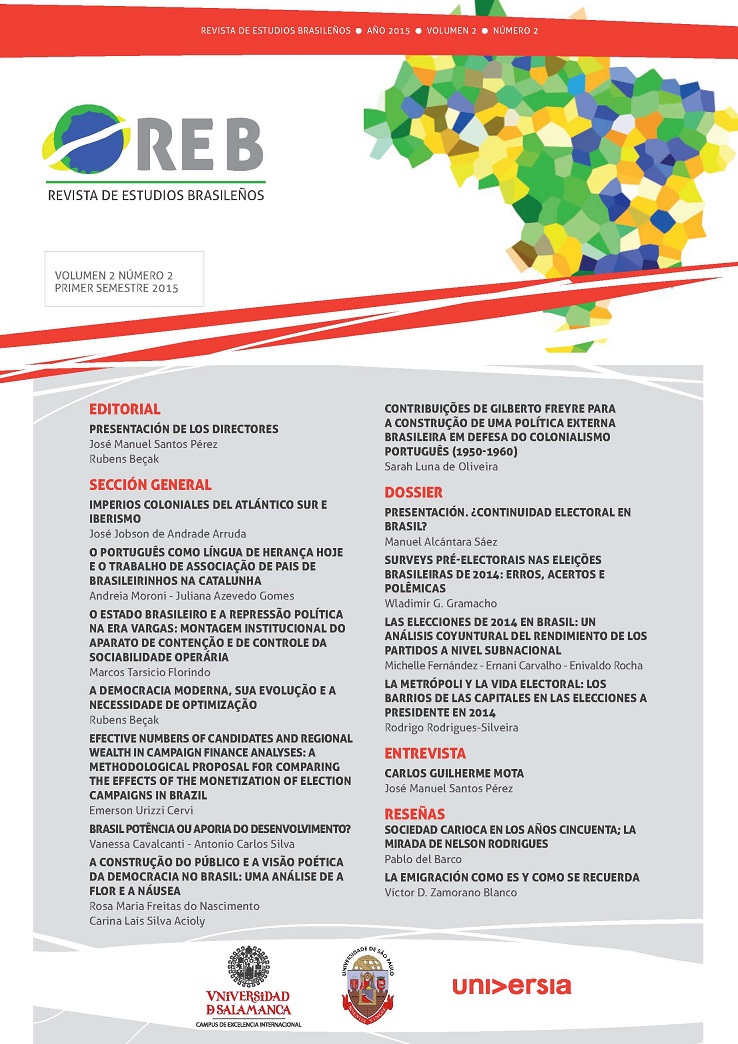The Construction of a Public Space and the Poetical View of Democracy in Brazil: Analysis of A flor e a náusea
DOI:
https://doi.org/10.3232/REB.2015.V2.N2.07Keywords:
Democracy, Drummond poetry, institutionsAbstract
In the world at large, the Second World War was taking place. In Brazil, there was the Vargas dictatorship. Driven by this situation, Carlos Drummond de Andrade published in 1945 The Rose of the People, the greatest of all his books, containing 55 poems. This work clearly has to do with social realism. As a counterpoint to Drummond's poetry, Sérgio Buarque de Holanda tries, with the work Roots of Brazil, published in 1936, to predict our future through the analysis of our past. The work is an analysis of Brazilian society and the emergence of our economic and political structures, an innovative analysis that designed the concepts of bureaucracy and ‘patrimonialism’ in our culture. Sergio sought the roots of the problems we currently face in the colonial period. He described the Brazilian as a ''cordial man'', i.e., acting by feeling, preferring personal relationships to the fulfillment of objective laws. The “culture of personality” addressed by Sergio is a looseness of social ties that gives rise to forms of solidarity and orderly organization. For Buarque, the Brazilian colonization was promoted by the Portuguese adventurer culture that rejects stability and planning and supports the practice of idleness. Thus, based on the texts by Drummond and Buarque we examine Brazilian society from a political and moral point of view, confronting its historic features with the present day.Downloads
Download data is not yet available.
Downloads
Published
2015-03-17
Issue
Section
General Section
How to Cite
The Construction of a Public Space and the Poetical View of Democracy in Brazil: Analysis of A flor e a náusea. (2015). Revista De Estudios Brasileños, 2(2). https://doi.org/10.3232/REB.2015.V2.N2.07


